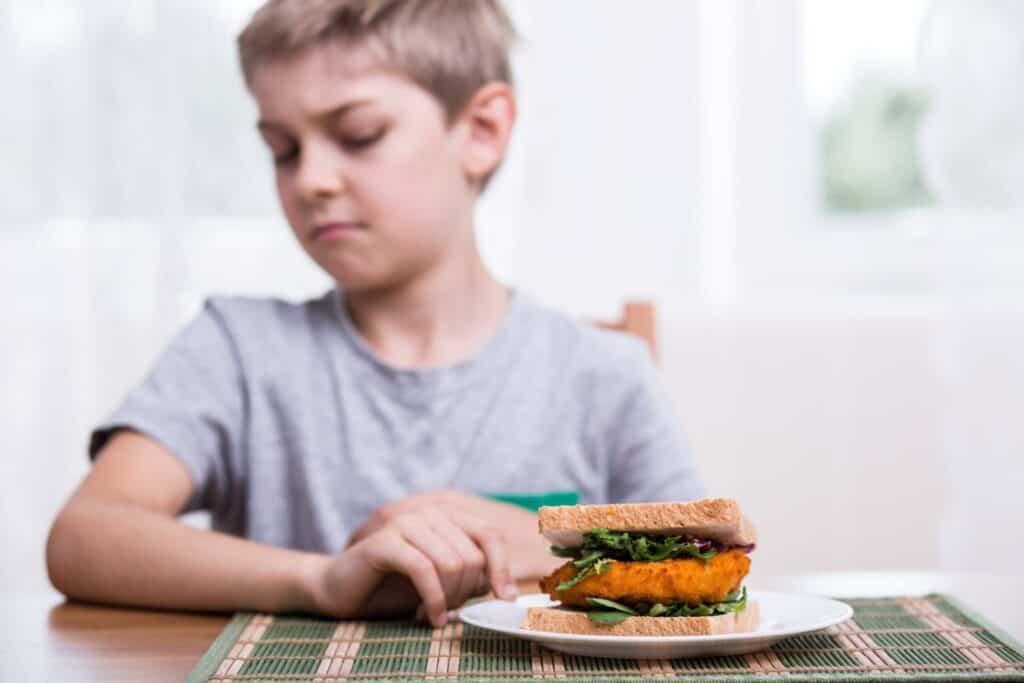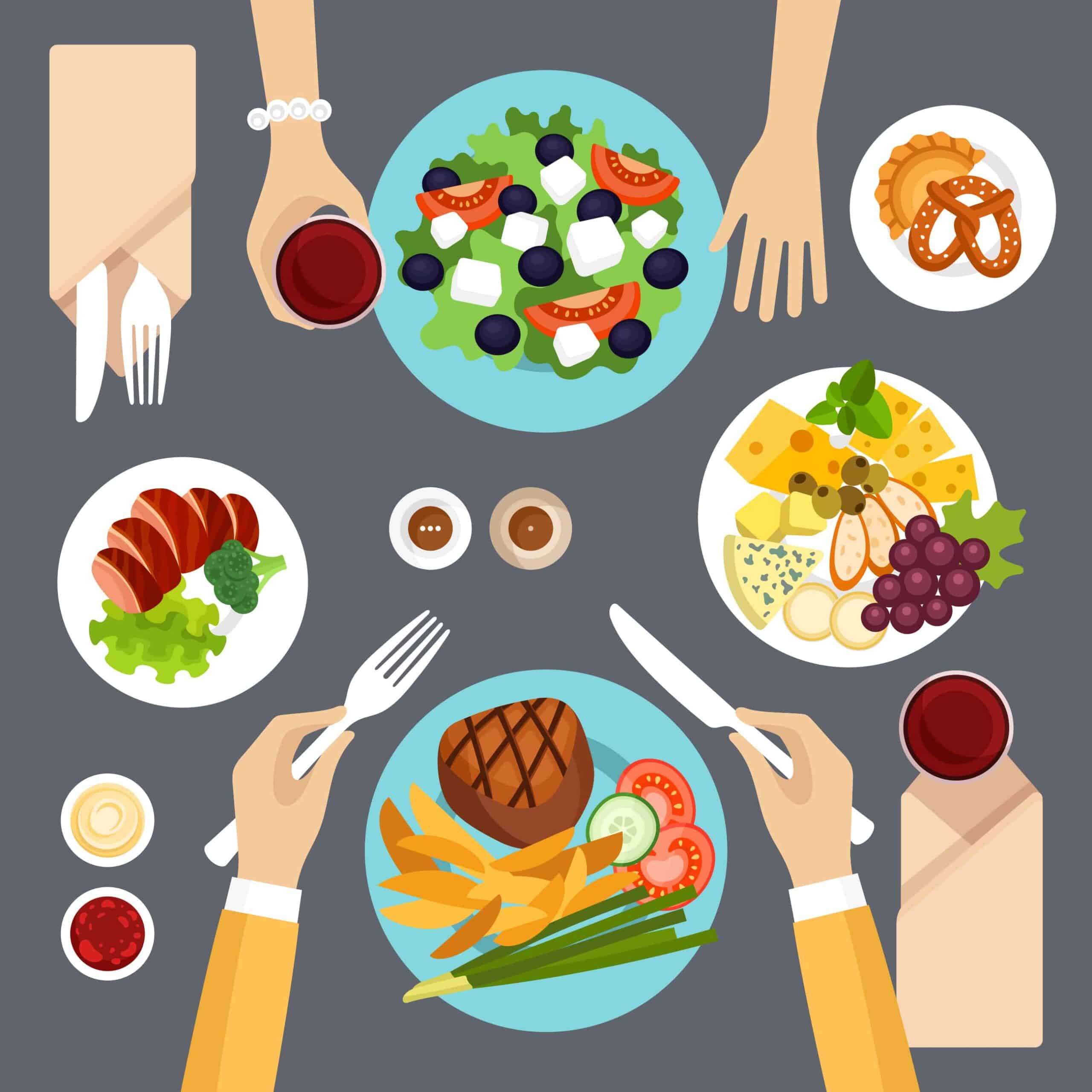Blog

What is the Difference Between Picky Eating and ARFID?
How to support a child with Avoidant Restrictive Food Intake Disorder
Picky eating (also known as fussy or selective eating) is a common stage of development in childhood that has no formal definition (1). Toddlers often become wary of trying new foods in what is termed the neophobic phase (2), which is typically after 12 months old and peaks around 18 months and they may start to refuse certain foods they previously enjoyed.
Most children grow out of this neophobic phase after a few years (3) if given the right support to develop a healthy relationship with food. Believe it or not, it may take 10 or more exposures to a new food for them to start to like it! (4)
What is avoidant restrictive food intake disorder (ARFID)?
Avoidant restrictive food intake disorder, known as ARFID, is extreme food refusal that in 2013 became a classified eating disorder (5). Children with ARFID may only eat as little as five different foods, and only accept specific brands and flavours (6).
The characteristics of the eating disorder are:
- A failure to meet nutritional needs due to a lack of interest in eating and an avoidance of certain foods or types of foods based on the sensory characteristics (e.g., smell, texture, colour, taste),
- An extreme concern about consequences of eating certain foods (such as choking, vomiting), leading to anxiety and,
- It can interfere with psychosocial functioning.
Interestingly, ARFID characteristics do not include concern with body image, shape or size.
The differences between picky eating and ARFID
Common Picky Eating | ARFID |
Very common and affects about one third of typically developing children between ages 1–5 years old | Less common in typically developing children and quite common in children with Autism Spectrum Disorder |
Usually little to minor growth or health consequences | Can have moderate or severe growth and health consequences (but not always) |
Can be very stressful for parents | Usually extremely stressful for parents |
Children usually grow out of it over weeks to months when the first line help is followed | Children can take a long time to make even small changes to their eating – even when the first line help is followed. Extra strategies are often needed |
Eat a range of foods including some from each food group although some days they may only eat very little or have preferences for a narrow range of foods | Eats a limited range of foods – often less than 20 different food items. Often refuse entire food groups all together |
Can be upset by exposure to new foods, changes in their favourite foods or when foods touch each other | Can be upset by exposure to new foods, changes in favourite foods or foods touching each other – this may be more extreme and may present similar to a phobia |
Hiding foods in other foods sometimes works, e.g., vegetables puréed in sauces | Hiding foods in other foods can be easily detected and can cause a child to become fearful of that previously accepted food and therefore isn’t recommended |
Won’t ‘starve themselves’ if you just offer usual family foods and ignore the tantrums | At risk of becoming ill from not eating or drinking if it is insisted that they just eat what is in front of them |
Will sometimes respond to ‘heavy handed’ tactics like demanding they eat usual family foods, but this is not recommended as increased anxiety at food times is counterproductive in the long run | ‘Heavy handed’ tactics like demanding they eat usual family foods is not recommended as it can trigger extreme anxiety and may cause a child to stop eating and drinking altogether for a period of time |
Figure 1: Adapted from Sheffield Teaching Hospital NHS Foundation Trust ‘Help for children who are extremely fussy eaters’ | |
How to support a child with picky eating
There are several strategies that you can use to work through some of the challenges with picky eating – the important point to remember is perseverance because it can sometimes take more than 10 exposures to a food before they start to like it.
Now this may sound like a lot but do not fret, it’s all a learning experience!
ONE. ROUTINE
Establishing an eating routine is key for beginning to improve relationship with food.
- Aim for 3 main meals daily at set time and place (breakfast, lunch and dinner, plus two or three snacks in-between).
- Limit mealtimes to 20 – 30 minutes.
- Get your child involved in preparing for the meal by encouraging them to wash their hands, lay the cutlery and also help clear up the dinner table at the end.
- Always offer two courses at mealtimes, a savoury and sweet one.
- Avoid offering too much milk or juice because it may suppress appetite.
TWO. ATTITUDE TOWARDS FOOD
Children learn by ‘role modelling’
- Cook and eat family meals together. Children do not need “children food” but can have family meals adapted to their developmental stage.
- Keep mealtimes relaxed and try to limit any conflict at the dinner table.
- Never force feed, but you can offer very gentle encouragement and praise!
- Avoid distractions such as iPad, TV or toys. Mealtimes are time to explore food.
- Never give food as a reward or ‘treat’; for example, don’t say ‘if you eat your peas you can have some ice cream.’
- Involve children in food outside of mealtimes – food play, shopping, food preparation.
- Don’t offer them too many meal or snack options; give them only two options to choose from e.g. say: “do you want spaghetti Bolognese or salmon fishcakes?”.
- Encourage them to eat to their appetite – they do not need to “finish plate clean”, and let them have seconds if they are hungry.
How to support a child with ARFID
Supporting a child with ARFID can be challenging because they often have a lack of interest in food and sensory aversions that make eating a very anxious experience.
Some of the above tactics for picky eaters can be helpful, particularly routine, however there are some additional strategies you may want to consider!
If your child is only eating a limited number of foods, and missing any food groups, you could consider a general children’s multivitamin that contains vitamin D to promote optimal bone and immune health.
In most cases, it is beneficial to work with a multidisciplinary team including speech and language therapist, occupational therapist and registered paediatric dietitian to help manage ARFID, sensory hyper-sensitivity and other potential psychosocial challenges. Reach out to your GP at first point-of-call for referral.
ONE. MANAGING MEALTIME ANXIETY
This advice is the opposite to common picky eating.
- If they feel anxious at mealtimes, play their favourite music or video, or allow them to bring favourite toy to the table. The aim is to reduce anxiety, not distract from the meal.
- If it is too anxiety-provoking at the family table, allow them to sit in a separate calm space (with supervision) that may be away from smells and sights of food they cannot tolerate.
- Stick to regular mealtimes and consider a visual support to back this up such as a timetable.
TWO. FOOD CHOICES
- Always offer their ‘safe foods’ at mealtimes AND any new food on a separate plate.
- This separate plate is a ‘learning’ plate whereby there is no pressure to eat the food initially, but encourage exploration of sensory features such as colour, smell, taste, texture. It can take 10 – 20 or more exposures to this new food before they will tolerate it.
- If having a new food on learning plate at mealtimes is too stressful, you may want to allocate a separate time of the day for “messy / food play” where you can use strategies for exploring new foods.
- Make just noticeable differences to some of their favourite foods on alternative days. For example, if they enjoy pancakes, you could change the colour or shape, or if they like chips you could make with sweet potatoes or cut into smaller bits. Do not try to hide food, it may risk them losing trust and avoiding that meal.
- To avoid them becoming “brand loyal” you could remove food from packaging before serving – for example serve yogurt in a bowl without showing pot.
Key take-aways messages
- Picky eating is a normal phase that most toddlers go through and overcome.
- ARFID is an eating disorder that can lead to an insufficient growth trajectory, nutritional deficiency and psychosocial challenges. It is often seen alongside anxiety and Autism Spectrum Disorders.
- Nutritional strategies for both require consistency, perseverance, patience and a lot of encouragement.
- Routine is a key feature in both and helps children to develop a safe and positive food environment.
- Repeated exposure to foods is an important strategy for increasing dietary diversity and ensuring a child’s nutritional needs are met.
When to get help
If your child’s eating behaviour is consequently impacting development, health, education, or social and psychological wellbeing, it is advised to seek support from your paediatrician/GP and a Registered Dietitian who can work with children. This will be important to examine and monitor growth and nutritional status, as well as improve related issues such as constipation, and recommend supplementation when necessary.
The Embody Health London team would be delighted to support you and your family to ensure optimal health and development for everyone. If you require support, please contact us at [email protected] to find out more about how we can help!
Zoe Light, RD
EHL Team x
References
- Dovey TM, Staples PA, Gibson EL et al. (2008) Food neophobia and ‘picky/fussy’ eating in children: a review. Appetite 50, 181–193.
- Cooke L, Wardle J, Gibson EL. Relationship between parental report of food neophobia and everyday food consumption in 2-6-year-old children. Appetite. 2003; 41: 205-206.
- Brown S, Harris G. Rejection of previously accepted foods during early childhood: An extension of the neophobic response. Appetite. 2012; 58,3,991-996
- Birch LL, Marlin DW. I don’t like it, I never tried it: Effects of exposure to food on two-year-old children’s food preferences. Appetite. 1982; 3: 353-60.
- Diagnostic and statistical manual of mental disorders. American Psychiatric Association. 5th ed. 2013. Washington DC.
- Bryant-Waugh R. Avoidant and restrictive food intake disorder: An illustrative case example. The International Journal of Eating Disorders. 2013. 46: 5 p.420–423.














